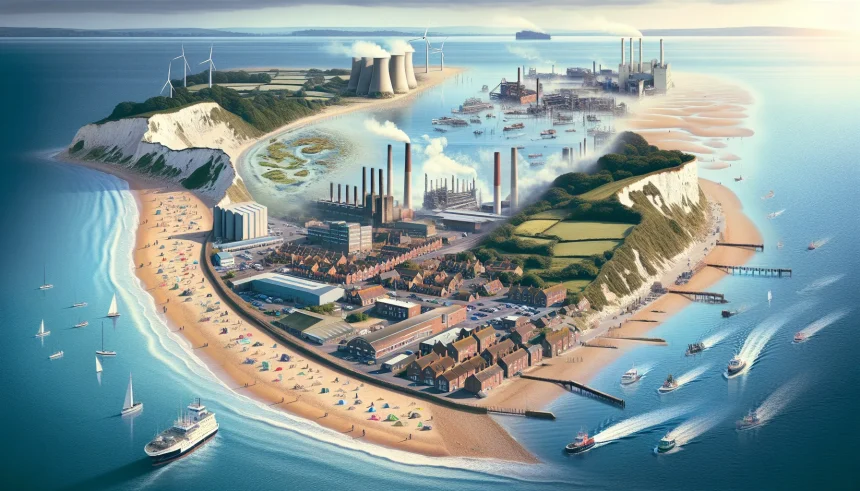The Isle of Wight, famous for sandy beaches and a storied rock festival that featured Jimi Hendrix and Bob Dylan, is working through factory losses while searching for growth. Local leaders and residents describe a tough few years for manufacturing, paired with a push to protect jobs and attract new work. The island’s small size and ferry links shape every decision, making the search for stable, well-paid employment both urgent and practical.
There have also been bright spots.
Tourism legacy meets industrial headwinds
Tourism anchors the island’s image and a large share of its jobs. The late-1960s rock festival helped put the island on the global map, drawing a new generation of visitors and music fans. Beach resorts, sailing events, and heritage sites still drive seasonal demand for hospitality and services.
But manufacturing setbacks have weighed on confidence. Factory closures and uncertainty ripple through supply chains, training programs, and household budgets. Employers report pressure from higher costs, long delivery times, and the logistics of being an island economy. Younger workers often leave for mainland opportunities, while firms face a tight market for skilled trades.
Where growth may come from
Even with recent losses, companies linked to marine services, composites, and specialty fabrication remain active. Small workshops adapt by focusing on quality, fast turnaround, and niche orders. Some employers report steady interest from sectors that need durable materials, custom parts, or repair work tied to boats and coastal infrastructure.
Tourism continues to bring cash into town centers. Events tied to music, sailing, and outdoor sports extend the season and support casual and part-time roles. Local councils and business groups highlight opportunities in clean energy supply chains, advanced materials, and retrofit projects that improve energy efficiency in homes and public buildings.
What residents and employers say
Community voices often describe a split story: steady visitor numbers on one side, and uneven factory floors on the other. While some workshops have downsized, others are hiring for specialized roles they struggle to fill. Training is a constant theme, with calls for more apprenticeships and short courses that match real vacancies.
The island is known for its beaches and a rock festival that featured Jimi Hendrix and Bob Dylan, but work on the shop floor still matters.
Employers say they need predictable ferry schedules and freight capacity to keep orders moving. Workers want travel costs kept in check, especially for early shifts and late returns. Both groups point to the value of stable, long-term contracts from major clients that can anchor local supply chains.
The stakes for a small island economy
Manufacturing can lift wages and create year-round roles that tourism alone may not provide. When a plant scales back, the effect spreads to contractors, cafes, and community services. The island’s distance from mainland hubs magnifies those risks, but it also encourages tight networks and rapid problem solving among local firms.
Business groups argue that the island’s size can be a strength. Decisions are made closer to the shop floor. Partnerships between schools, colleges, and employers can update training quickly. Pilots for clean heating, coastal repair, or recycled materials can be tested, measured, and adjusted within a single budget cycle.
- Skills: expand apprenticeships linked to real vacancies.
- Transport: reliable ferry capacity for freight and shift workers.
- Investment: modernize equipment and support energy upgrades.
What to watch next
Observers will watch whether new orders land in marine, composites, and energy retrofit work over the next year. Summer events will test the strength of visitor spending, while autumn will show if workshops can keep full order books. College enrollment in trades will signal whether young people see a future on the island.
Momentum often hinges on a few decisions. A single contract can support multiple small firms. A training cohort can fill hard-to-find roles in weeks. And a transport improvement can shave time off every delivery. Each change edges the island closer to balanced growth.
The island’s brand rests on sun, surf, and the echo of a famous stage. Its future will also depend on steady hands in workshops and docks. Recent years brought setbacks, but the story is not finished. If skills, transport, and targeted investment align, those bright spots could grow into a stable base for the next decade.







